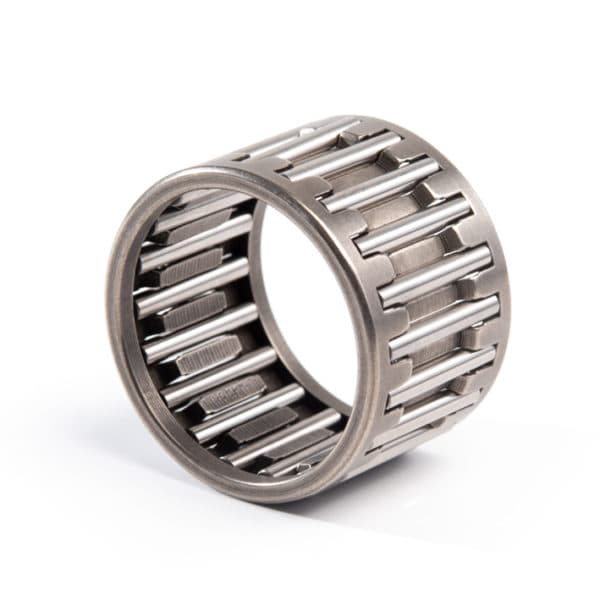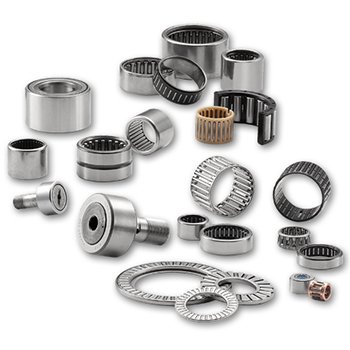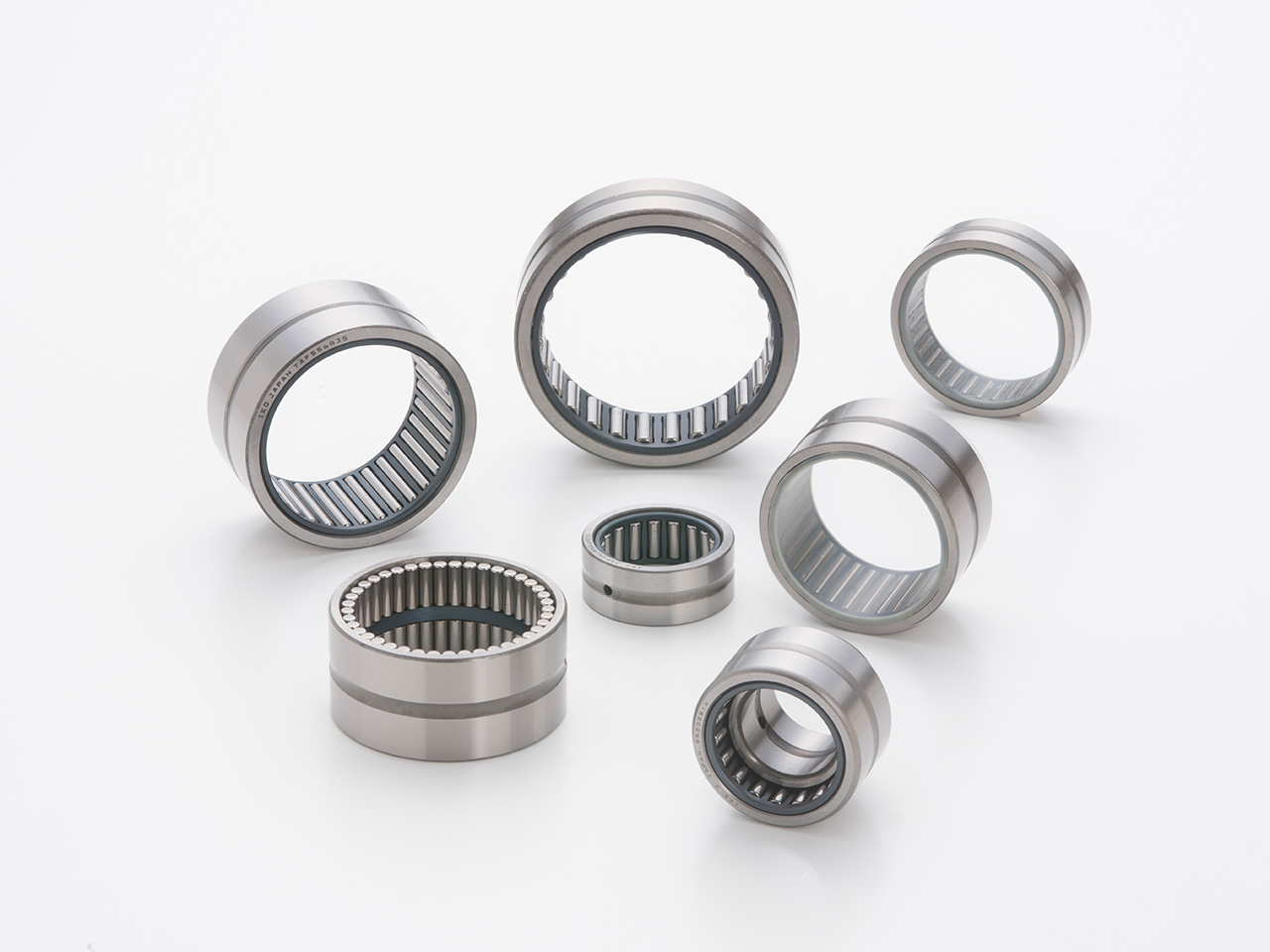Impact of Needle Bearing Cage Materials on Performance
The choice of needle bearing cage material significantly influences the performance, durability, and overall functionality of the bearings. The cage, also known as the retainer, holds the needle rollers in place, maintaining proper spacing and alignment. Different cage materials offer varying characteristics that impact the bearing’s operation:
- Steel Cages:
Steel cages are a common choice for needle bearings due to their durability, high strength, and resistance to wear. They are suitable for applications with high loads, moderate speeds, and normal operating temperatures. Steel cages provide excellent stability and consistent roller spacing.
- Plastic Cages:
Plastic cages, often made from materials like polyamide (nylon), offer advantages such as low friction, reduced noise, and electrical insulation. They are commonly used in applications where low noise levels and lightweight design are essential. Plastic cages are ideal for moderate-speed applications with light to moderate loads.
- Brass Cages:
Brass cages are valued for their high thermal stability and resistance to corrosion. They are often used in applications with elevated temperatures and aggressive environments. Brass cages maintain their structural integrity at high speeds and provide reliable performance in challenging conditions.
- Metal-Polymer Composite Cages:
Composite cages combine the benefits of different materials, such as steel and plastic. These cages provide improved lubrication retention, reduced friction, and enhanced wear resistance. They are suitable for applications where extended maintenance intervals and low friction are desired.
- Needle Cages:
In certain needle bearing configurations, the needles themselves act as the cage, eliminating the need for a separate cage component. This design reduces cage-related friction, contributing to improved efficiency and lower energy consumption.
When selecting the appropriate cage material for needle bearings, consider the specific requirements of the application:
- Load and Speed:
Choose a cage material that can withstand the expected load and speed conditions without deformation or excessive wear.
- Operating Environment:
If the bearing will operate in extreme temperatures, corrosive atmospheres, or other harsh conditions, select a cage material with the necessary resistance to maintain performance.
- Friction and Lubrication:
Consider the friction characteristics of the cage material and how it interacts with the lubricant. Some materials reduce friction, while others may require additional lubrication.
- Noise and Vibration:
For applications where noise reduction is important, choose a cage material that minimizes noise and vibration generation during operation.
- Weight:
In weight-sensitive applications, select a lightweight cage material that doesn’t compromise overall system efficiency.
The cage material plays a critical role in maintaining proper needle roller alignment, reducing friction, and ensuring the longevity of needle bearings. By carefully considering the application’s demands, you can select the optimal cage material that aligns with performance goals and operating conditions.
Contribution of Needle Bearings to Efficiency and Precision in Machining Equipment
Needle bearings play a vital role in enhancing the efficiency, precision, and overall performance of various types of machining equipment. These precision bearings are specifically designed to handle high radial loads, limited installation space, and provide smooth motion. Here’s how needle bearings contribute to the efficiency and precision of machining equipment:
- Reduced Friction:
Needle bearings feature closely spaced needle rollers that offer line contact with the raceways. This design minimizes friction, allowing machining equipment to operate smoothly with less energy loss and reduced heat generation.
- High Load Capacity:
In machining processes, equipment often experiences significant radial loads. Needle bearings’ ability to distribute these loads efficiently makes them suitable for applications where heavy cutting forces or tool pressures are involved.
- Compact Design:
The compact size of needle bearings allows machinery designers to optimize space utilization in tight installations. This is particularly valuable in machining equipment where a minimal footprint is essential for precise tool positioning and accurate workpiece processing.
- Accurate Positioning:
Needle bearings provide accurate and repeatable motion, ensuring precise positioning of cutting tools, workpieces, or components. This level of precision is crucial for achieving tight tolerances and high-quality finished products.
- Smooth Motion:
The geometry of needle rollers facilitates smooth rolling motion even under heavy loads. This characteristic ensures that machining equipment can move with precision, resulting in consistent and uniform cuts or operations.
- Vibration Damping:
Needle bearings’ design and load distribution help dampen vibrations generated during machining processes. Reduced vibration enhances the overall stability of the equipment and minimizes tool chatter, contributing to smoother surface finishes.
- Enhanced Tool Life:
By minimizing friction, reducing wear, and providing reliable load distribution, needle bearings contribute to extending the lifespan of cutting tools and equipment components. This leads to reduced downtime and maintenance costs.
- High-Speed Capabilities:
Many machining processes involve high rotational speeds. Needle bearings are designed to handle moderate to high speeds while maintaining accuracy, making them suitable for operations requiring rapid tool movement.
- Customization Options:
Needle bearings are available in various designs, including drawn cup, radial, and thrust configurations. This diversity allows equipment designers to select the most suitable bearing type for each specific application.
- Reliable Performance:
Needle bearings are engineered for durability and consistent performance, even in demanding machining environments. Their reliable operation contributes to minimizing unplanned downtime and maximizing productivity.
Overall, needle bearings enable machining equipment to achieve the required precision, accuracy, and efficiency necessary for producing high-quality components and products. Their ability to handle heavy loads, reduce friction, and provide smooth motion makes them an integral component in modern machining processes.
Applications and Industries Commonly Using Needle Bearings
Needle bearings, due to their unique design and advantageous characteristics, find applications in a wide range of industries and scenarios where compactness, high load capacity, and efficient motion are essential. Here are some typical applications and industries where needle bearings are commonly used:
- Automotive Industry:
Needle bearings are used in various automotive components, including engines, transmissions, drive shafts, and wheel hubs. They provide efficient load handling and precise motion, contributing to the performance and reliability of vehicles.
- Industrial Machinery:
Industrial machinery, such as machine tools, printing presses, textile machines, and conveyors, often rely on needle bearings for their ability to handle high radial loads while maintaining a compact size. These bearings are essential for smooth and accurate motion in industrial processes.
- Aerospace and Aviation:
In aerospace applications, where minimizing weight and space is critical, needle bearings are used in components like control systems, actuators, landing gear, and flight control surfaces. Their compact design and high load capacity make them suitable for various aircraft systems.
- Medical Equipment:
Needle bearings are used in medical devices and equipment, including surgical tools, imaging systems, and laboratory equipment. Their precise motion and compact size are essential for maintaining accuracy and efficiency in medical procedures.
- Consumer Electronics:
Devices such as printers, scanners, cameras, and optical instruments often incorporate needle bearings to achieve smooth and precise movement. These bearings contribute to the overall user experience by delivering accurate functionality.
- Power Tools:
Power tools like drills, grinders, and saws utilize needle bearings for their ability to withstand heavy loads and provide efficient motion. These bearings contribute to the durability and performance of the tools.
- Textile Industry:
In textile machinery, needle bearings play a crucial role in maintaining the precise movement required for processes such as weaving, spinning, and knitting. Their ability to handle high loads ensures reliable operation in demanding textile applications.
- Construction Equipment:
Construction machinery, including excavators, bulldozers, and cranes, use needle bearings to handle heavy loads and provide smooth motion in various mechanical components. These bearings contribute to the efficiency of construction operations.
- Robotics and Automation:
Needle bearings are essential in robotic systems and automation equipment, where compact size, high load capacity, and precise motion are necessary for efficient operation. They enable accurate movement and positioning in robotic applications.
- Marine Industry:
In marine environments, needle bearings are used in shipbuilding, offshore platforms, and marine equipment. Their ability to withstand harsh conditions and efficiently handle loads makes them valuable components in marine applications.
These examples demonstrate the versatility of needle bearings and their widespread use across various industries. Their ability to provide efficient load handling and precise motion in compact designs makes them a valuable solution in applications where performance, reliability, and space optimization are paramount.
editor by CX 2024-03-29




